Every year, independent British bookshops come together to celebrate Bookshop Day in October. This year, D3D has compiled our favourite design-led books, spanning a wide range of themes so there’s something for everyone.
Recent releases:
Everlasting Plastics edited by Isabelle Kirkham-Lewitt, Lauren Leving, Joanna Joseph and Tizziana Baldenebro
Everlasting Plastics explores the “infinite ways plastics permeate our bodies and our world,” spanning from political discussions on their impact to questioning our dependencies on plastics. It reflects on the exhibition of the same name at the 2023 Venice Biennale, which ran from 20 May to 26 November 2023, extending its message further to predict the impact of plastics on our future economies and environments. Through a range of formats including critical essays, research and art, the book revises and expands our relationship to plastics and their effect on other cultures and behaviours, as well as their impact on the built environment.
Available for preorder, with release set for 23 November 2024.
Design for Impact: Your Guide to Designing Effective Product Experiments by Erin Weigel
Design for Impact provides practical tips and tools for designing experiments at scale, including a toolkit in the appendix which consolidates all this information into a step-by-step process that can be used every day. After coming to the conclusion that design and development decisions should not be based on opinion, Weigel designed a science-backed system which combines human-centred problem solving, scientific methods and business. She also provides a hierarchy of evidence in which types of evidence are compared to their reliability and several other flowcharts intended to make decision-making in teams easy and reliable.
Available to order from Weigel’s website.
Designed for Life: The World’s Best Product Designers by Kelsey Keith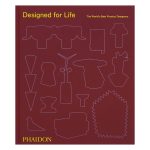
Designed for Life is a “global survey of 100 of the most creative and innovative product designers working today.” It showcases their work across design, art, fashion and architecture, with a focus on how these varieties of design are often blurred and reconceptualised by the newest generation of product designers. Products featured include furniture, lighting, glassware and office systems, and have been chosen by a lineup of experts including design critics, museum curators, entrepreneurs and journalists. The nominated designers have all emerged in recent years and have already produced innovative new designs. Keith outlines the materials, processes and technologies these designers are utilising as well as the growing importance of sustainability and representation in the world of design.
The Formula: How Rogues, Geniuses and Speed Freaks Reengineered F1 into the World’s Fastest-Growing Sport by Joshua Robinson and Jonathan Clegg
Wall Street Journal reporters Joshua Robinson and Jonathan Clegg have written “the first definitive account of how F1 came to achieve total global fandom,” beginning in 1950s Britain during breakthroughs in wartime engineering and ending with the promise of an infinite future for the world’s fastest-growing sport. The book provides an insight into the global celebrity of drivers like Lewis Hamilton, what goes on behind the scenes of top automotive corporations, the design process of the cars, and the rivalries that make the sport so exciting. Robinson and Clegg explain exactly how the sport understood the necessary balance between money, personality and the era of digital entertainment, thus becoming one of the biggest sports in the world.
Classics:
The Design of Everyday Things (Revised and Expanded Edition) by Donald A. Norman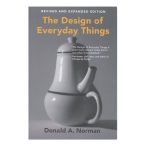
Cognitive scientist Donald Norman proposed in 1988 that design fundamentally ignores the needs and psychology of people, and needs to change, drawing on examples like difficult-to-use showers and television sets. Norman argues that people tend to blame themselves when things malfunction and should instead blame the lack of intuitive guidance in the object’s design. The expanded edition, published in 2013, has applied his original psychological principles to new technologies in order to remain up to date, as well as expanding on some of his original terminology to make concepts clearer. Both editions include Norman’s Design Challenge, which encourages product designers to re-centre psychology in their production of everyday items.
The Design Book (New Edition) by Phaidon Editors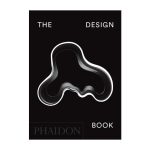
This comprehensive guide is a collaboration between the editors at Phaidon and contains several hundred everyday objects that have all shaped society in some way and span the last five centuries. The collection ranges from classic pieces including Breuer’s iconic chair designers and Le Corbusier’s urban planning solutions, to anonymously designed inventions like the deck chair and the whisk. The new edition has been edited to bring each entry up to date and contains thirty new products that have all been designed within the last fifteen years in order to make the collection fully comprehensive and relevant to today’s readers.
Kenneth Grange: Designing the Modern World by Lucy Johnston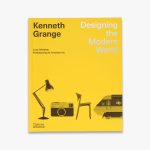
Johnston’s compilation of Grange’s iconic designs is considered the most definitive. Based on a series of discussions between the two, as well as Johnston’s exclusive access to Grange’s archive, the book acts as both a biography and a collection of Grange’s most famous works through his own eyes, including the TX1 London black taxi, appliances for Kenwood, cameras for Kodak, pens for Parker and post boxes for Royal Mail, amongst many others. It features sketches, letters, scale models and photographs, and also mentions the artists and designers who inspired and worked alongside Grange, all of whom shaped today’s consumer culture.
Monetizing Innovation: How Smart Companies Design the Product around the Price by Georg Tacke and Madhavan Ramanujam
Monetizing Innovation argues against the high failure rate and billions of dollars of loss that is considered ‘normal’ in the world of business. 72% of innovations fail to meet their financial targets, and this, Tacke and Ramanujam claim, is wasteful and wrong. Instead, they explain how companies can design products around their prices to remove the guesswork in releasing a new product. As consultants at Simon Kucher, Tacke and Ramanujam use their experience to create a nine-step approach, with case studies that demonstrate how some of the biggest companies in the world utilise this approach, from Uber and Porsche to major pharmaceutical companies.
Recommendations:
Woman Made: Great Women Designers by Jane Hall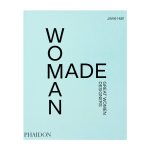
Woman Made is “the most comprehensive, fully illustrated book on women designers ever published,” including designers from the early twentieth century to the present day. Featuring over 200 women from more than 50 countries, a key product from each designer is spotlighted in alphabetical order, showcasing a huge variety of functional products, from everyday household items to furniture to electronics. While some of the designers and items featured are household names, including Ray Eames and Isle Crawford, Hall made an effort to also include lesser-known figures in order to show that women have always been active in the world of design, regardless of how much public recognition they received.
Radical Matter: Revolutionary Materials and Design for a Sustainable Future by Kate Franklin and Caroline Till
Radical Matter acts as a “road map” for product designers, presenting eight “Big Ideas” intended to inform their choice of materials, design methods and manufacturing processes in order to be truly sustainable. Each “Big Idea” features case studies of designers who are going beyond the traditional notion of sustainable design, drawing upon holistic systems of design, consumption and production to benefit the environment in the long run. The book also contains a directory of resources for new sustainable materials, as well as a definitive list of global research centres, innovation hubs, academic courses and libraries.
Why Materials Matter: Responsible Design for a Better World by Seetal Solanki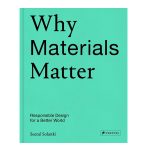
Solanki asks the question of how the materials that make up our world will affect our future in Why Materials Matter. It demonstrates how the earth’s most basic elements have been utilised by designers, artists and scientists for millennia, and how they can continue to be used to create new materials: from ancient ways of dyeing fabrics to tackling food waste by recycling plastics. It goes on to discuss the potential of the digital space to assist the improvement of material use, and how issues that human beings face every day are both the cause for our overuse of materials and also the potential solution.
Women in Design by Anne Massey
Women in Design reveals the untold stories of the female pioneers of design who created some of the most important and revolutionary objects over the last 120 years. From interior decorator Elsie de Wolfe and architect Zaha Hadid to fashion designer Mary Quant, designers are presented chronologically, revealing the link between early twentieth century design and lifestyle, and the liberating nature of consumerism for women. Illustrated throughout, examples of each woman’s most significant designs are displayed. Massey also discusses the contribution of female designers during and after the second world war, alongside design activism and the women working today across the world in architecture and design.






